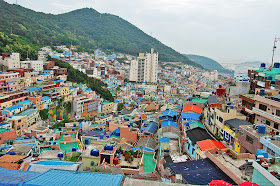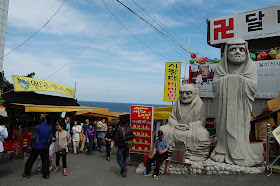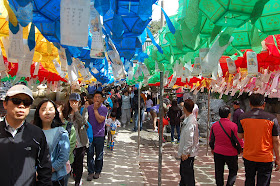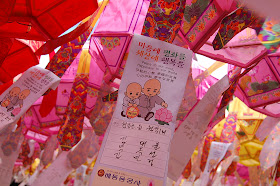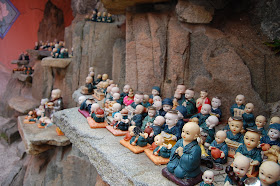Back in December,
I visited Noryangjin Fish Market, a famous haven for Seoul's seafood enthusiasts, and though I didn't sample any of the food on offer there, I enjoyed browsing its many aisles of fish, crabs, rays, urchins and other colourful marine creatures.
More recently, Angela and I explored Busan's premier fish market, Jagalchi Fish Market. Even larger than Noryangjin, it had a cleaner and more modern feel than that establishment, though it was still just as archaic, gruesome and - if I'm honest - entertaining to explore.
 |
| The large, warehouse-like exterior of the market. |
 |
| Greeting you as you enter are some cartoonish statues of fish and other apparently cheerful sea creatures. |
 |
| A vendor prepares to catch and kill an eel before selling it to a customer. |
 |
| In a restaurant on the market's second floor we tried out octopus sannakji, an essential eating experience for expats living in Korea. The octopus is cut into small pieces, served immediately, and eaten raw while its bodyparts are still moving. You can't tell from the photo but the whole plate was alive with wriggling tentacles! |
 |
| It may seem gross, but it actually tasted pretty good. |
 |
| Views over Busan's huge port. |
 |
| Jagalchi also has an outdoor market nearby. |
 |
| We watched this octopus escape from its tank. |
 |
| Frozen, box-packed fish bits. |
 |
| Heading out towards Nampo district. |
Jagalchi Fish Market is definitely worth your time if you're ever visiting Busan. While I preferred Noryangjin overall, this was still a cool place to explore, and I'm glad we ticked "eating wriggling octopus tentacles" off of our bucket list.

























